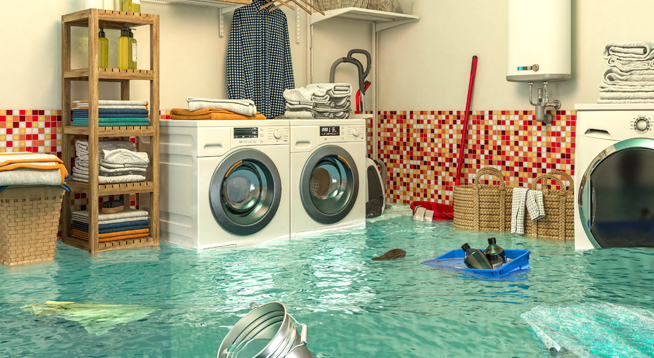The Inside Outside Guys: Riding Out The Storm
DETROIT, July 8, 2021 ~ There are only a few things for a homeowner that are worse than finding a basement flooded with storm water or, worse, sewage.
Buildings that are serviced by public sewer systems typically have a single pipe that leaves the dwelling below the lowest plumbing fixture in the house and slopes downward to a larger pipe, called a lateral, usually under the street.
This pipe is “tapped” into connecting the house sewer line to the public sewer line that also gravity feeds to a larger pipe.
This process continues through the system until the sewage is delivered to the waste treatment facility.
Some parts of the system will gravity feed to pump stations that will lift the sewage to another pipe such that it can continue to gravity feed. If the pumps fail the sewage will back up in the pipes.
During heavy rains, we may also have storm water “mix” with the sewage and overwhelm the pipes, again causing back-ups.
Historically we liked the idea of storm water in heavy rains “flushing the system”, but the overflow was deposited directly into rivers which then carried the raw sewage downstream. Since this is no longer an acceptable outcome, the two systems are now required to be separate. Unfortunately, some jurisdictions have not been able to modify infrastructure to the point of keeping the two apart during heavy rain events.
How do you prepare for or anticipate this and how do you handle the clean up and repair?
Newer buildings are required to have a “check valve” or “backflow preventer” installed in the sewer line where it leaves the structure. This device is a “one-way” valve that allows sewage to flow out, but nothing to flow back in. Some jurisdictions have also mandated that these devices be retro-fitted to existing buildings.
If you have had back-ups in the past, an insurer may require such an install to provide future coverage.
The install can run from several hundred to a few thousand dollars depending on pipe type, location, valve type and quality. It has always been advised to conduct annual inspections on the valves and some locales will require it of property owners.
What is sometimes termed a “blue-collar” protection is a vertical piece of pipe connected to the floor drain or drains. You may be able to simply fit such a pipe into the drain with a rubberized sleeve or retrofit a threaded fitting such that you can screw this “stand-pipe” to the floor drain. The idea is that sewage will have to back up to a height above that of the stand pipe to over flow into your basement or crawl space. The pipe can be removed and stored when the high water threat no longer exists.
There are also one-way drain plugs that can be retro-fitted to basement floor drains that may prevent back-ups into the basement.
Making certain surface water from roofs, driveways, patios, etc., is directed well away from the home during such events can also help prevent a flood condition. During extended dry periods, the soils against the house may shrink and create a gap at the foundation. Heavy rains may flow down this gap to the basement and overwhelm the footing drains.
Once sewage has flooded a basement, keep in mind the potential bio-hazard. Clean up of water heaters, furnaces, or other equipment may require professional assistance.
The burners on such equipment may be corroded or plugged and sensitive electronics destroyed.
Drywall, insulation and wood framing products may be contaminated as well.
Drying out the area should be done slowly using a lot of air circulation. Inexpensive box fans, home ceiling fans, and use of the buildings AC system to circulate and de-humidify air is suggested if the system is safe and functional.
Beware of potentially unethical people that may go door-to-door promising professional clean-up and repair. Honest contractors will come with a strong and credible referral and will generally be able to assist with insurance claims to replace contaminated household equipment or damaged walls and finished areas.
If it’s recently happened to you, you have seen the worst. Take action now to prevent it from happening again. Contact a trusted team partner from our website at InsideOutsideGuys.com and discuss a solution that works for your home or office.
For more housing advice, listen to the Inside Outside Guys every Saturday and Sunday on News / Talk 760 WJR from 10 a.m. to noon or contact us at InsideOutsideGuys.com.

